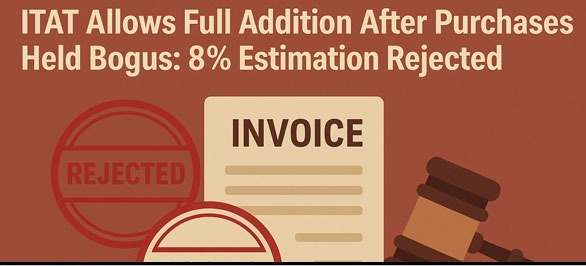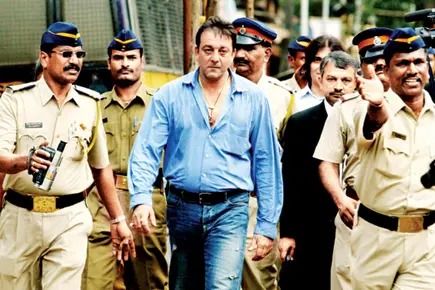R. Subbiah, J.@mdashChallenging the award dated 30.09.2011 made in M.C.O.P. No. 491 of 2007 passed by the Motor Accidents Claims Tribunal (Subordinate Court), Sangagiri, the Insurance Company has filed the present appeal. The respondents 1 to 4 herein are the claimants before the Tribunal, being the wife, minor son, mother and father of the deceased Ragupathi, who lost his life in the road accident that had occurred on 19.08.2007 involving the lorry insured with the appellant herein/Insurance Company.
2. It is the case of the respondents 1 to 4 herein/claimants before the Tribunal that on 19.08.2007 at about 12.30 hours, while the deceased was driving his Maruthi Car bearing Registration No. TN-28-R-1233 keeping on the left side of the road on NH-47 Selam-Coimbatore Main Road, at Pachanpalayam, a lorry bearing Registration No. KA-40-8989 came from the opposite direction being driven by its driver in a rash and negligent manner and dashed against the car and thus, caused the accident. In the said accident, the said Ragupathi sustained multiple injuries and he died on the spot itself. Hence, the legal heirs of the deceased have made a claim as against the owner of the lorry as well as its insurer/appellant herein claiming a sum of Rs. 30 lakhs as compensation.
3. The case of the respondents 1 to 4/claimants was resisted by the appellant/Insurance Company taking a defence that at the time of accident, the lorry was proceeding at moderate speed keeping on left side of the road and it is the maruthi car came from the opposite direction in a rash and negligent manner and entered into a wrong side of the road and dashed against the lorry.
4. The Tribunal, after analyzing the entire evidence adduced on either side, has come to the conclusion that the accident is the result of the rash and negligent driving of the driver of the lorry. Based on the said finding, the Tribunal has calculated the compensation under different heads and has passed an award for a total sum of Rs. 19,50,000/-. Aggrieved over the findings rendered by the Tribunal that the driver of the lorry is responsible for the accident as well as questioning the quantum of compensation, the present appeal has been filed by the Insurance Company.
5. It is the submission of the learned counsel for the appellant/Insurance Company that before the Tribunal the Insurance Company had taken a defence that the accident had occurred only due to the rash and negligent driving of the driver of the car. In this regard, the learned counsel for the appellant/Insurance Company submitted that on the date of accident, when the lorry was proceeding from East to West keeping on the left side of the road, the car, which was coming from the opposite direction, entered into wrong side of the road and dashed against the lorry and thus, the deceased himself got involved in the accident. In order to prove this defence, on the side of the appellant/Insurance Company, the driver of the lorry was examined as R.W. 1. The learned counsel for the appellant/Insurance Company submitted that the evidence of R.W. 1, Accident Sketch-Ex. P.4 marked on the side of the claimants and the admission made in the cross-examination of P.W. 2, who was an eye-witness to the accident, would go to show that the accident had occurred only on the fault of the driver of the car viz., the deceased Ragupathi. But, the Tribunal has failed to consider Ex. P.4-Accident Sketch as well as the admission made by P.W. 2. Hence, the finding rendered by the Tribunal that the accident is the result of rash and negligent driving of the driver of the lorry is liable to be set aside and consequently, the Insurance Company has to be exonerated from its liability in paying the compensation amount.
6. Per contra, the learned counsel for the respondents 1 to 4/claimants submitted that a criminal case was registered as against the driver of the lorry and on completion of investigation, a charge-sheet has also been filed as against the driver of the lorry by the Police. Therefore, the Tribunal considering all these aspects has come to the correct conclusion that the accident is the result of rash and negligent driving of the driver of the lorry alone. Therefore, the said finding needs no interference from this Court.
7. Heard the learned counsel on either side and perused materials available on record.
8. The learned counsel for the appellant/Insurance Company has placed much reliance on the Accident Sketch marked as Ex. P.4 on the side of the claimants, to prove the defence of the appellant that at the time of accident, the deceased, who was coming in the car, entered into wrong side of the road and dashed against the lorry. But, We are of the opinion that when the charge-sheet has been filed as against the driver of the lorry on completion of the investigation, now merely by placing reliance on the Accident Sketch marked on the side of the claimants as Ex. P.4, the Appellant/Insurance Company can not be exonerated from its liability in entirety.
9. In fact, in the recent judgment of the Hon''ble Supreme Court reported in
24. The mere position of the vehicles after accident, as shown in a Scene Mahazar, cannot give a substantial proof as to the rash and negligent driving on the part of one or the other. When two vehicles coming from opposite directions collide, the position of the vehicles and its direction, etc. depends on number of factors like speed of vehicles, intensity of collision, reason for collision, place at which one vehicle hit the other, etc. From the scene of the accident, one may suggest or presume the manner in which the accident caused, but in the absence of any direct or corroborative evidence, no conclusion can be drawn as to whether there was negligence on the part of the driver. In absence of such direct or corroborative evidence, the Court cannot give any specific finding about negligence on the part of any individual.
Keeping the dictum laid down in the above said judgment, We are of the opinion that independently the Accident Sketch cannot have any evidentiary value on its own, unless there is a corroborative piece of evidence.
10. But, it is the submission of the learned counsel for the appellant/Insurance Company that in the evidence of P.W. 2, it has been admitted that the accident had occurred only in the manner shown in the Accident Sketch and therefore, apart from the Accident Sketch, the admission made by P.W. 2 in his evidence is also available in this case to the effect that the accident had occurred only in the manner shown in the Accident Sketch. But, on a careful perusal of the evidence of P.W. 2, eye-witness to the occurrence, We do not find any detailed cross-examination. When the sketch was shown to him, he made a stray admission. Therefore, the said admission of P.W. 2 will not be much helpful to come to a conclusion that the accident is the result of rash and negligent driving of the driver of the car, particularly, when the Police had filed charge-sheet as against the driver of the lorry. In this background, on going through the entire materials available on record, We are of the opinion that the drivers of the vehicles are responsible for the accident. Considering the facts and circumstances of the case, negligence could be fixed on the part of the driver of the lorry at 75% and 25% negligence could be fixed on the part of the deceased.
11. Accordingly, the finding rendered by the Tribunal is modified to the effect that the driver of the lorry is responsible for 75% negligence and the driver of the car viz., deceased is responsible for 25% negligence.
12. So far as the quantum of compensation is concerned, We find that it is the case of the respondents 1 to 4/claimants that the deceased was a BE Graduate and he was running a Lorry Transport and also owning 10 lorries and he was earning a sum of Rs. 25,000/- per month. That apart, he was owning 40 acres of land. It is the evidence of P.W. 1 that after the demise of her husband in the accident, the family is unable to carry on the business of agricultural operations and therefore, there is heavy loss in income to the family. However, the Tribunal by placing reliance on P.W. 3-Accountant has fixed a sum of Rs. 15,000/- as monthly income of the deceased. After deducting Rs. 5,000/- towards personal expenses, by applying multiplier of 16, the Tribunal has arrived at a sum of Rs. 19,20,000/- as total loss of income to the family. That apart, by adding a sum of Rs. 25,000/- towards loss of consortium to the 1st respondent/wife, a sum of Rs. 10,000/- towards loss of love and affection to the 2nd respondent/minor son, a sum of Rs. 20,000/- towards loss of love and affection to the respondents 3 & 4, a sum of Rs. 5,000/- each towards funeral expenses and Transport expenses, the Tribunal has arrived at a total sum of Rs. 19,85,000/- as compensation. Absolutely, We do not find any infirmity in the calculation made by the Tribunal to arrive at a sum of Rs. 19,85,000/-. Hence, We are not inclined to interfere with the quantum of compensation arrived at by the Tribunal.
13. However, in view of the finding that the deceased was responsible for 25% negligence for the accident, 25% amount has to be deducted from the total compensation amount. If 25% amount is deducted, the balance amount comes to Rs. 14,88,750/- (19,85,000 4,96,250 = 14,88,750).
14. Consequently, the total compensation amount awarded by the Tribunal is modified and reduced to Rs. 14,88,750/-. In the result, the appeal is partly allowed and the compensation amount awarded by the Tribunal is modified and reduced to Rs. 14,88,750/- with interest at there rate of 7.5%. The 1st respondent/wife is entitled to Rs. 7 lakhs and 2nd respondent/minor son is entitled to Rs. 5 lakhs and the balance amount has to be apportioned equally between the respondents 3 & 4/parents of the deceased. Since it is reported that the entire compensation amount has already been deposited, the respondents 1, 3 & 4 are permitted to withdraw their respective share amount with accrued interest, after deducting the amount that has already been withdrawn by them. The Tribunal is directed to deposit the share of the minor (2nd respondent) in any one of the nationalised banks and the 1st respondent is permitted to withdrawn the accrued interest once in three months, till the 2nd respondent attains majority. The appellant/insurance company is permitted to withdraw the excess amount, if any.
Consequently, connected Miscellaneous Petitions are closed.
There is no order as to costs.

